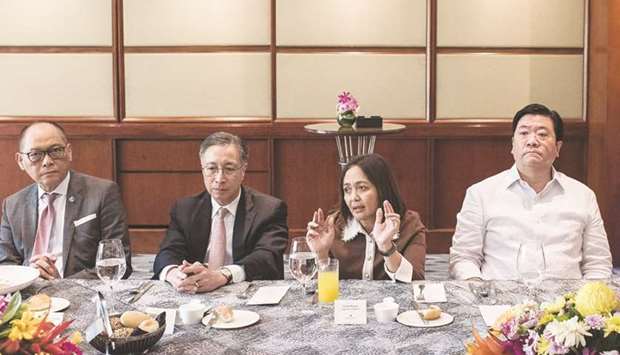The Philippine central bank may resume cutting interest rates next year and is considering “around 50 basis points” of easing, governor Benjamin Diokno said Friday.
The bank, which kept its benchmark rate at 4% Thursday for a second straight meeting, could resume easing as early as its next meeting on February 6 or as late as the second quarter of the year, Diokno said in an interview with Bloomberg TV’s David Ingles.
Bangko Sentral ng Pilipinas governor Benjamin Diokno talks about monetary policy and the Philippine economy.
Bangko Sentral ng Pilipinas has cut rates three times this year and lowered the ratio of funds that banks must hold in reserve to help stimulate the economy.
Diokno said the BSP has now paused its easing “because we want to find out how the 75 basis points that we did this year, and 400 basis point cut in the reserve requirement, is going through the system.” Recent signals by the US Federal Reserve and the European Central Bank to stay on hold “gave us maybe more time to pause, then find out where we’re going next year,” he said.
Diokno, who took office in March, has followed through on a pledge to gradually reduce the reserve ratio in order to pump funds into the economy.
He said Friday he plans to lower it to single digits by the end of his term in 2023 from 14% currently. Inflation picked up last month but generally remains subdued, giving policy makers room to resume rate cuts in the future.
The central bank on Thursday left its inflation forecasts unchanged at 2.4% for this year and 2.9% for 2020 and 2021.
“We’re pretty happy with where we are” on inflation, Diokno said.
Despite the easing moves, loan growth in October was at its lowest level since 2010.
Diokno said it was too soon to conclude that the bank’s policy was not working.
“As you know, monetary policy works with a lag. So that’s why we stopped at this point and find out how we will respond to the significant cuts in the reserve requirement,” he said. “We cannot conclude on the basis on what we’ve seen thus far that there’s a slowdown in lending.”
Economic growth rebounded to 6.2% in the third quarter after a sluggish start to the year, but the outlook remains uncertain given US-China trade tensions and weakening investment across developing Asia.
Diokno has said full-year growth will probably come in at the low end of the government’s 6%-6.5% target range.
The country’s currency rose Friday to its highest level against the US dollar in a month, in line with regional currencies on optimism over the US-China trade deal.
The peso was up 0.4% at 50.510 as of 9:51am, its strongest level since November 8.

Chuchi Fonacier, deputy governor of the Bangko Sentral ng Pilipinas (centre right), speaks as (from left) Benjamin Diokno, governor of the BSP; Nestor Tan, president of BDO Unibank Inc, and Fabian Dee, president of Metropolitan Bank and Trust Co, listen during a Bloomberg round table event in Manila. Diokno said the central bank has now paused its easing u201cbecause we want to find out how the 75 basis points that we did this year, and 400 basis point cut in the reserve requirement, is going through the system.u201d


